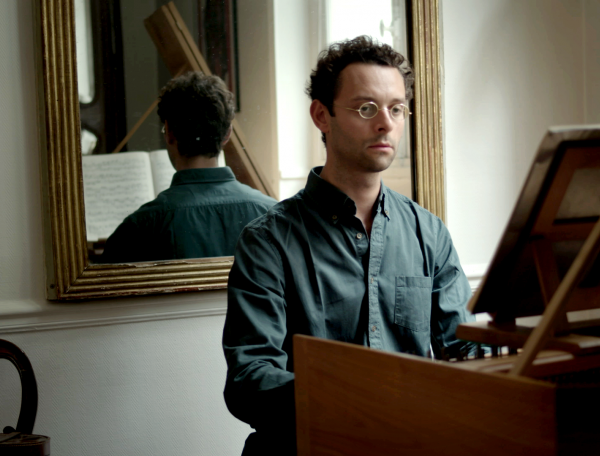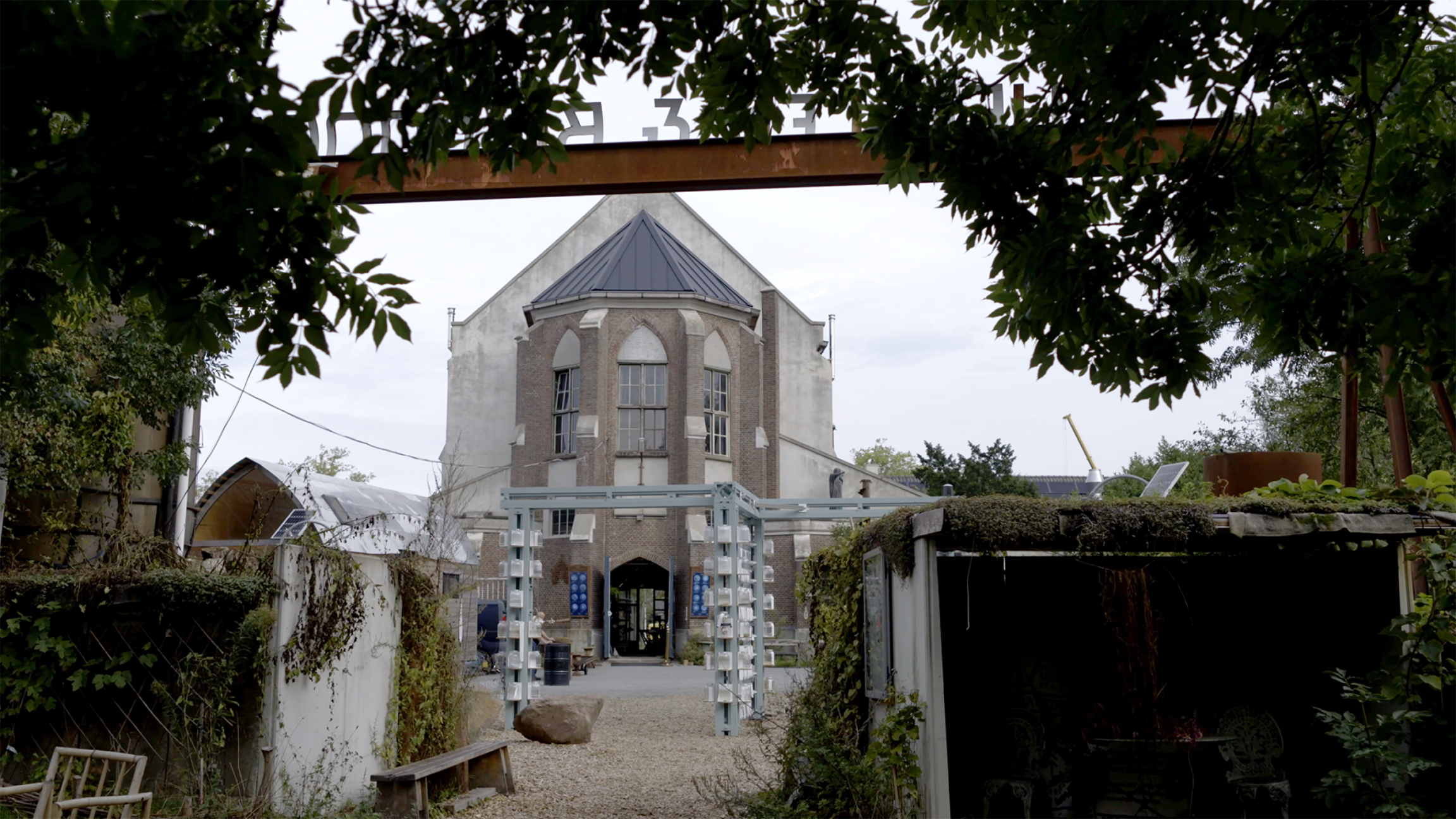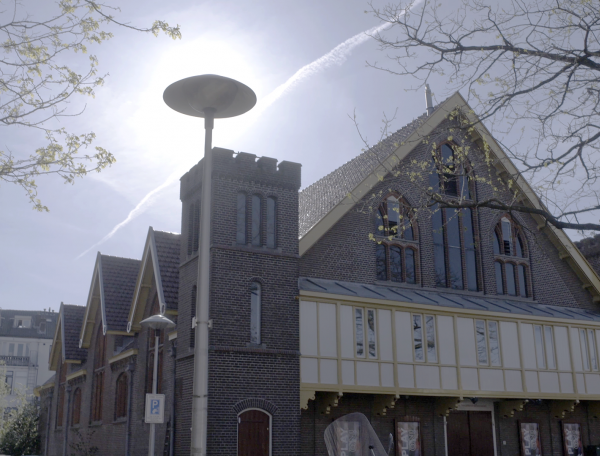

The Well-Tempered Clavier II No. 9 in E major
BWV 878 performed by Christine Schornsheim
at Metaal Kathedraal, Utrecht
Behind the music
A swinging ‘standard’
How Bach became a textbook master
The fugue is probably the most complex construction in Western music. So writing a fugue theme is actually a job for engineers. With mathematical precision, you have to envisage what atmosphere you want to evoke and which tricks you should use, while remembering to mentally test how much tension your theme has as construction material. It’s a real puzzle for beginners, but also for experienced composers. For the encouragement of both young and old minds, there were all sorts of models or ‘standards’, in textbooks like Fux’ Gradus ad Parnassum, for example, or in Bach’s own publications, which also served an educational purpose.
The theme of this fugue, from no. 9 in the Wohltemperirte Clavier II, is one of these widely known standards. It had been used before by Froberger and Frescobaldi, for example. Bach himself borrowed from Ariadne Musica by Johann Caspar Ferdinand Fischer, using an identical theme, key and structure – but with a radically more interesting development. Fischer’s fugue remains simple and short, while Bach systematically and – finally! – very comprehensibly explores all sorts of contrapuntal possibilities. In each of the five sections, he introduces new elements: stretti (entrances that interrupt one another) after the exposition; a new theme that subtly reinforces the verve of the main theme; an inverted basic theme; ornamentation, and finally a recapitulation of the second section in combination with the inverted, ornamented theme. So that’s the way to complete the puzzle!
Coming after such an ingenious construction, the prelude feels refreshingly light. This was maybe the reason why the Swingle Singers arranged the prelude for their legendary album Jazz Sebastian Bach, released in 1963. Above the pedal (a long, sustained bass note), two voices develop a game of ties and dissonants. As is often the case in the second Wohltemperirte Clavier book, this prelude is in two parts, in line with the ‘galant’ composition style, which was modern in Bach’s day. The music follows a fairly clear-cut harmonic path from root to dominant (the fifth tone of a scale) and back again.
WTC II
We recorded Bach’s first book of Preludes and Fugues in all the keys at the homes of 24 different musicians. For this second part, performed in its entirety by Christine Schornsheim, we chose 12 very different locations in Utrecht, to celebrate the 900th anniversary of our home city.
Das Wohltemperirte Clavier, BWV 846-893
Composing 48 keyboard pieces in all 24 keys was the sort of challenge Bach enjoyed. In each of the two parts of the Wohltemperirte Clavier, he brought together the musical couple prelude and fugue 24 times; twelve in minor keys and twelve in major. In the preludes, he gave free rein to his imagination, and demonstrated mathematical tours de force in the fugues. In contrast to the iron discipline Bach had to apply to his church compositions, here he could abandon himself to intellectual Spielerei without worrying about deadlines.
The first part of the Wohltemperirte Clavier dates from 1722, although it contains some music that was written in the preceding five years. There is less clarity about the history of part two. Bach compiled this second manuscript only around 1740, although once again some of the preludes and fugues it contains date from a much earlier period. Bach described the target group for this collection of pieces as follows: ‘Zum Nutzen und Gebrauch der Lehr-begierigen Musicalischen Jugend, als auch dere in diesem studio schon habil seyenden besonderem ZeitVertreib’ (For both the education of the industrious musical youngster and the enjoyment of those well-versed in this material’).
- BWV
- 878
- Title
- Prelude en fugue in E major
- Epithet
- no. 9 from the Well-Tempered Clavier II
- Instrument
- harpsichord
- Genre
- harpsichord works
- Serie
- Das Wohltemperirte Clavier II
- Year
- 1739/1740
- City
- Leipzig
Extra videos
Vocal texts
Original
Translation
Credits
-
- Release date
- 27 December 2022
-
- Recording date
- 23 September 2022
-
- Location
- Metaal Kathedraal, Utrecht
-
- Harpsichordist
- Christine Schornsheim
-
- Harpsichord
- Bruce Kennedy 1989, after Michael Mietke
-
- Director, camera and lights
- Gijs Besseling
-
- Music recording
- Guido Tichelman, Pim van der Lee
-
- Music edit and mix
- Guido Tichelman
-
- Camera, lights
- Danny Noordanus
-
- Data handling
- Stefan Ebels, Brechtje van Riel
-
- Assistant music recording
- Marloes Biermans
-
- Producer
- Marieke de Blaay
Discover
Help us to complete All of Bach
There are still many recordings to be made before the whole of Bach’s oeuvre is online. And we can’t complete the task without the financial support of our patrons. Please help us to complete the musical heritage of Bach, by supporting us with a donation!

